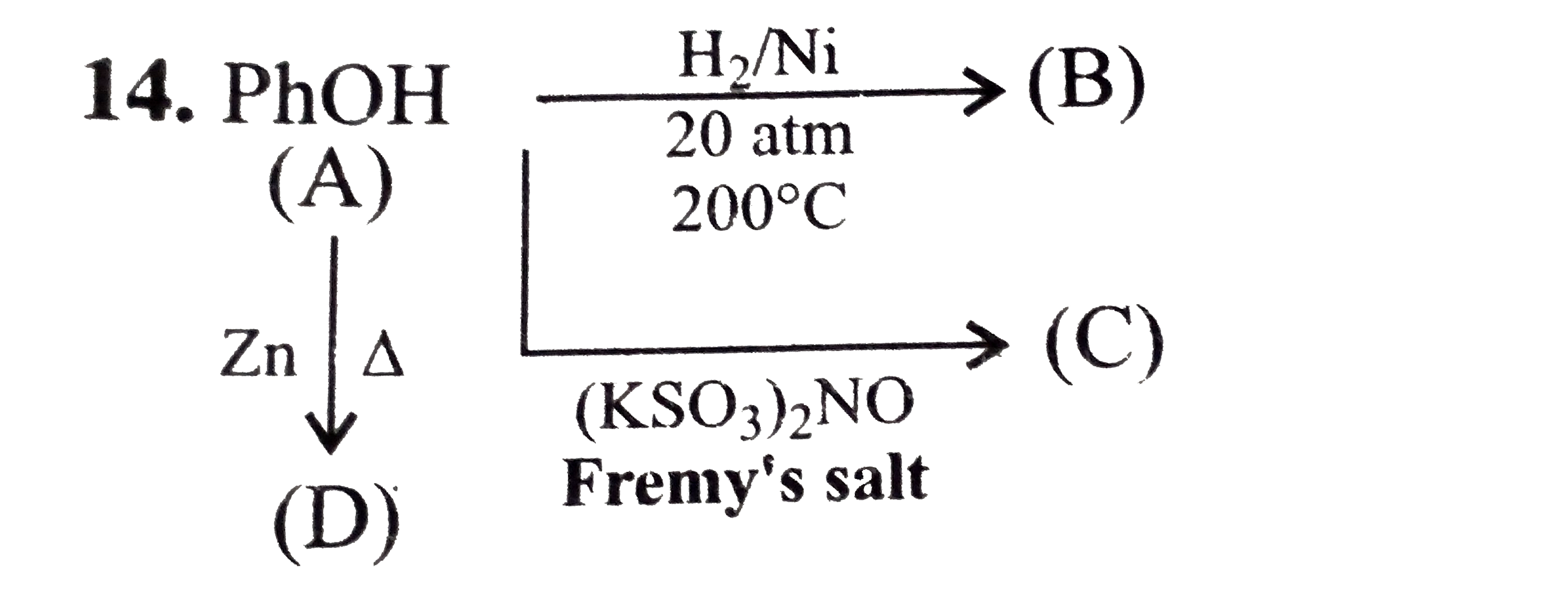
The compound (B) is :
Et−N∣Pr−CH=O
Et−N=Ch−Pr
Et−H∣N−OH∣CH−Pr
Et−H∣N−O∣∣C−Pr
The correct Answer is:B
(b) In an isocyanide, first an electrophile and then a nucleophile is added at the same C atom of (−⊕N≡ӨC) group to form a species which usually undergoes further transformations.
 .
.
Topper's Solved these Questions
- BOOK - CENGAGE CHEMISTRY ENGLISHCHAPTER - GRIGNARD REAGENTS AND ORGANOMETALLIC REAGENTSEXERCISE - Exercises (Multiple Correct)16videos
GRIGNARD REAGENTS AND ORGANOMETALLIC REAGENTS
- BOOK - CENGAGE CHEMISTRY ENGLISHCHAPTER - GRIGNARD REAGENTS AND ORGANOMETALLIC REAGENTSEXERCISE - Exercises (Single Correct)47videos
GRIGNARD REAGENTS AND ORGANOMETALLIC REAGENTS
- BOOK - CENGAGE CHEMISTRY ENGLISHCHAPTER - GRIGNARD REAGENTS AND ORGANOMETALLIC REAGENTSEXERCISE - Exercises (Subjective )17videos
GRIGNARD REAGENTS AND ORGANOMETALLIC REAGENTS
- BOOK - CENGAGE CHEMISTRY ENGLISHCHAPTER - GENERAL PRINCIPLES AND PROCESS OF ISOLATION OF ELEMENTSEXERCISE - Archives (Subjective)14videos
GENERAL PRINCIPLES AND PROCESS OF ISOLATION OF ELEMENTS
- BOOK - CENGAGE CHEMISTRY ENGLISHCHAPTER - NCERT BASED EXERCISEEXERCISE - Nuclear Chemistry (NCERT Exercise)29videos
NCERT BASED EXERCISE
Similar Questions

Q. Hybridization of B in compound (B) isView SolutionThe compound (A) in the previous question is further hydrolysed in dilute acidic medium to give compounds (B) and (C). The compounds (B) and (C) are :
View SolutionA compound (A) is formed by the reaction of ethylene with bromine which on reacting with aqueous KOH gives a compound (B). The compound (B) can also be prepared by the reaction of ethylene with the following:
View SolutionIf the optical rotation produced by the compound (A) is +52∘, the one produced by compound (B) is :
 View Solution
View SolutionAn alkali metal A gives a compound B (molecular mass = 40) on reacting with water. The compound B gives a soluble compound C on treatment with aluminium oxide. Identify A, B and C and give the reactions involved.
View Solution
The compound (B) and (C ), respectively, are:View Solution
The compounds (B), (C ), (D), respectively are:View SolutionCompound 'A' of molecular formula C4H10O on treatment with Lucas reagent at room temperature gives compound 'B'. When compound 'B' is heated with alcoholic KOH, it gives isobutene. Compound 'A' and 'B' are respectively :
View Solution
The red colour of compound (B) is due to the formation of:View SolutionParagraph for problems 9−15

Compound (B) is:View Solution
